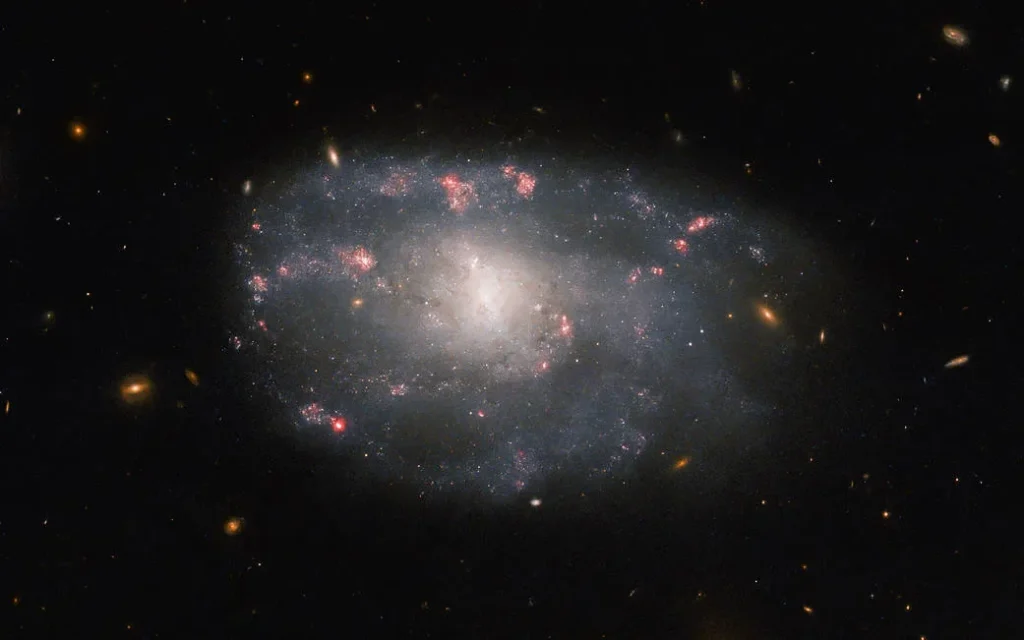In the grand tapestry of the universe, galaxies are dynamic systems, constantly reshaping themselves through the circulation of elements. Recent studies have unveiled the intriguing concept of a galactic ‘conveyor belt’, which plays a crucial role in amplifying the life cycle of stars and the evolution of galaxies themselves. This article delves into the mechanics of this galactic conveyor belt, its implications on cosmic element distribution, and its significance for understanding the broader universe.
Understanding the Galactic Conveyor Belt
The galactic conveyor belt is a framework that describes the movement of gas, dust, and stars throughout galaxies. It operates on both small and large scales and serves as a critical mechanism in the recycling of elements produced by stellar processes. Here are some key aspects of this fascinating phenomenon:
- Elements Circulation: The conveyor belt facilitates the movement of elements created in stars, allowing them to be reused in subsequent star formation.
- Stellar Formation and Death: As stars live and die, they release key elements back into the interstellar medium, where they can be re-absorbed to form new stars.
- Galactic Scale Movements: The interactions within galaxies, such as collisions and mergers, enhance the efficiency of this circulation process.
Key Mechanisms of Element Circulation
1. Supernova Explosions
Supernovae are spectacular stellar explosions that serve as primary drivers of the galactic conveyor belt. When a massive star exhausts its nuclear fuel, it undergoes a dramatic collapse, resulting in an explosion that releases a wealth of elements like carbon, nitrogen, and oxygen. These elements then populate the surrounding space, influencing the formation of new stars and planets.
2. Galactic Winds and Outflows
Galactic winds, driven by energetic stellar phenomena, transport gas and dust away from galaxies and into intergalactic space. These outflows can be influenced by:
- Star Formation: Newly formed stars often emit intense radiation that heats and expels surrounding gas.
- Active Galactic Nuclei (AGN): Supermassive black holes at the centers of galaxies can produce powerful jets that eject materials across vast distances.
3. Infalling Gas and Dark Matter
The galactic conveyor belt also involves the infall of gas and dark matter from the intergalactic medium. This inflow is essential for:
- Restocking Elements: Fresh gas is crucial for star formation, ensuring a steady supply of raw materials.
- Gravity’s Role: Dark matter helps gravitationally bind galaxies, funneling gas toward their centers and enhancing star formation rates.
The Impact on Galactic Evolution
The movements along the galactic conveyor belt have profound implications for the evolution of galaxies. Understanding these processes provides insight into:
- Star Formation Rates: The efficiency of star formation is directly tied to the quality and quantity of the available gas, which is moderated by the conveyor belt’s dynamics.
- Galactic Morphology: The distribution of stars and elements influences whether a galaxy will evolve into a spiral, elliptical, or irregular shape.
- Element Abundance: Different regions within galaxies display varied elemental compositions, steering the chemical evolution over time.
Research and Observational Strategies
To map the functionalities of the galactic conveyor belt, astronomers are employing various techniques and technologies:
- Multi-Wavelength Observations: Telescopes operating across different wavelengths provide comprehensive views of star formation, gas distributions, and supernova activities.
- Computer Simulations: Advanced simulations allow researchers to visualize complex interactions within galaxies, hinting at the processes driving element circulation.
- Sample Analysis: Studies of cosmic dust and gases collected through spectral analysis reveal the chemical diversity influenced by the conveyor belt.
Future Directions in Galactic Research
As science continues to evolve, so too does our understanding of galaxies and their elemental circulation. Future directions may include:
- Examining Distant Galaxies: Investigating galaxies billions of light-years away can shed light on the early universe and the formative processes that shaped it.
- Addressing Dark Matter Mysteries: Untangling the role of dark matter in conjunction with the conveyor belt may unlock secrets about the universe’s composition and fate.
- Refining Elemental Models: More precise modeling of the processes involved in star formation and supernova explosions will lead to improved understanding of element distribution across cosmic scales.
Conclusion
The galactic ‘conveyor belt’ is more than just a process; it is a fundamental mechanism that governs the life cycles of galaxies and the stars within them. By understanding how elements circulate in and out of galaxies, scientists can gain deeper insights into the structure and evolution of the universe at large. As research continues to push the boundaries of our knowledge, we stand on the cusp of uncovering even more about the intricate workings of galaxies and their elemental flows.


